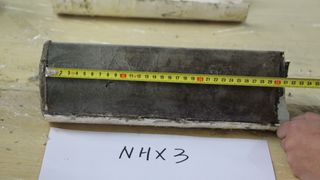Global warming is burying large amounts of silver under the South China Sea – and the same may be happening across the world’s oceans, scientists say.
The amount of silver found in sea sediments on the coast of Vietnam has increased significantly since 1850, the new research shows. This coincides with the beginning of the industrial revolution, when humans began to irrigate greenhouse gases enter the air in large numbers.
This is the first time research has shown a possible link between the silver cycle in the oceans and global warming, the study author said. Liqiang Xuan associate professor in the geosciences department at Hefei University of Technology in China, told Live Science in an email. The research shows that global warming may have unknown effects on other things, Xu said. (Trace elements are elements such as cobalt, zinc and iron that are present in small amounts in the environment but can serve as essential micronutrients for life.)
Like other elements, silver comes from the ground and enters the ocean mainly through the weather, where rainwater flows from rocks and carries it into rivers.
Some areas of the ocean are made of silver due to high levels of water intrusion, atmospheric dust, human emissions and marine emissions. Silver in its ionic form (Ag+) is toxic to marine life, Xu said, but little is known about how it interacts with the ocean environment.
Affected: Pollution cuts from shipping industry suddenly increase global warming, study suggests
To find out more about how silver behaves in the marine environment, Xu and his colleagues analyzed a sediment core from Vietnam that rises up in the eastern South China Sea. Upwelling areas are coastal areas where cold water rises from the ocean floor. raising food from the depths which supports a rich ecosystem.
His head is divided into two areas, according to the study, published Aug. 13 in the journal Geophysical Survey Letters. The silver level was lowered from the base of the head, starting from about 1200 BC, to about 3 inches (7 centimeters) from the top. But the upper end of the head showed a completely different behavior.

“The body of [silver] In the last 3,200 years shows a sudden increase around 1850,” the researchers wrote in the study. That period is “consistent with the CO2 emissions record,” they added, suggesting that climate change causing silver burial in some marine sediments.
The concentration of silver in the places of elevation is often high, especially in areas where humans add more silver to the mix through industry and pollution, according to the study. Such areas include Massachusetts Coast in San Francisco Bay, by explorers in the first dub and “silver estuary.”
The level of silver along the coast of Vietnam is very high and similar previously written and rising regions in Canada, Mexico, Peru and Chile, Xu said. “However, these studies do not link higher rates to global warming,” he said.
Global warming boosts sea temperatures and coastal winds, which connects to increase the power of upwelling. This leads to other nutrients rising to the surface, increasing the amount of algae that eats the whole food. Dissolved silver levels in these areas may mean organisms absorb more silver than other areas. When they finally die and sink, this silver falls to the bottom of the ocean.

“Silver goes into the sediment with organic matter,” Xu said. “A lot of strengthening is due to global warming, we believe that the silver in the sediments of all these areas is increasing.”
Writers 2021 review of Trace metals In the sea admitted that dead things may be transporting silver to the surface of the sea, although many other things may be at play, they said. For example, low oxygen levels can promote silver trapping in sediments through chemical reactions, four of the authors told Live Science in an email.
“There is strong evidence that the oxygen zone in the ocean is expanding,” they said. “If silver traps increase in these low-oxygen areas, it can actually occur on a large scale.”
If this happens on a global scale, it could be a problem because silver can escape and kill marine life, Xu said. “High levels of silver in sediments can be released into the water,” he said.
If the silver doesn’t escape back into the water, it will eventually find its way back, the study authors said. “Nothing is really lost, only moved,” they said.
#Silver #buried #sea #due #climate #change #research